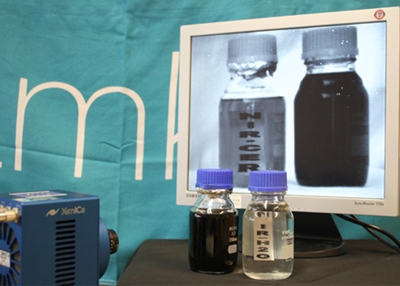Machine vision opportunities in information collection in the wavelengths that are invisible to the human eye
Machine vision solutions about non-visible to the human eye wavelengths bring substantial benefits in their place. Mostly it’s about a subject or a phenomenom which human eye or a normal machine vision camera could not detect. In this case the benefit can’t even be measure because without a proper camera, no information would be gained from the subject or phenomenom.
Non-visible wavelenghts of the electromagnetic spectrum mean under 400 nm and above 700 nm since visible wavelengths are 400 to 700 nm. In this case we’re speaking about ultraviolet radiation (UV) and infrared radiation (IR), which both have even more subnames for more precise wavelength areas.
IR-Imaging have been used by Satakunta University of Applied Sciences for example quality inspection of mineral wool, inspecting car windshields tensions homogeneousity, checking paper dryness in paper factory production line and quality control on welding.
In welfare technology IR-imaging has been used to clarify blood circulation’s connection in knee’s different pain levels, cold treatments affect on blood circulation’s disruption, and also the changes on blood flow when doing lower limb exercises.
Following the path earlier researches have provided, researching near infrared imaging has been continued and we have taken near infrared spectral imaging in our repertory. Near infrared imaging in Satakunta University of Applied Sciences has been used for example imaging through chemicals that are non-visible to the human eye, also silicon can be seen through with NIR and many different type of plastics, for example we can detect liquids in plastic cups which would not be possible to the human eye.
